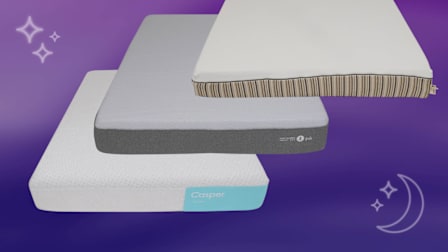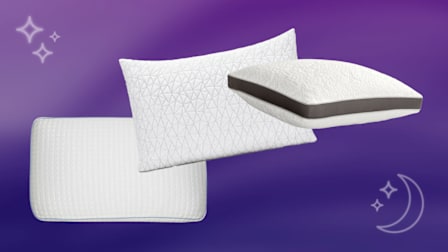Mattress Face-Off: AmazonBasics vs. Tempur-Pedic
Can a mattress that costs $250 go up against a pricey Tempur-Pedic?
When you shop through retailer links on our site, we may earn affiliate commissions. 100% of the fees we collect are used to support our nonprofit mission. Learn more.

You may think that paying more for a mattress translates to better sleep. But based on our mattress tests, that’s not necessarily the case.
“We’ve found no correlation between price and performance in our tests,” says Chris Regan, the project leader at Consumer Reports who oversees our mattress testing.
Go to Consumer Reports’ Holiday Gift Guide for updates on deals, expert product reviews, insider shopping tips, and much more.
Vitals
AmazonBasics: Weighing just 53 pounds, the AmazonBasics is a mattress-in-a-box foam bed that’s vacuum-sealed and shipped directly to your door. It doesn’t come with any gels like some pricier mattresses—it’s made of three layers of polyurethane foam. In our tests, we found that this mattress retains warmth—so it might make you feel a little sweaty when you sleep. It’s also on the softer side of our firmness scale, rating just a 2 on a scale of 1 to 10, with 10 being the firmest. Our testers measured this mattress to be 81 inches long by 61 inches wide by 10 inches tall.
Tempur-Pedic: The Tempur-Pedic boasts several foam layers made of materials that the manufacturer claims keeps this foam mattress cool while you sleep. And in our tests, we did find that it sleeps pretty cool, unlike a number of other foam mattresses. It’s not a mattress-in-a-box, so it needs to be delivered by truck to your home (though this is typically free). Like the AmazonBasics, this Tempur-Pedic is on the softer side, earning a 3 on our firmness scale. Our testers measured this mattress to be 79 inches long by 60 inches wide by 13 inches tall.
CR members can read on for the blow-by-blow details of how these two mattresses perform in our tests where we assess mattresses' support, stability, durability and features.































